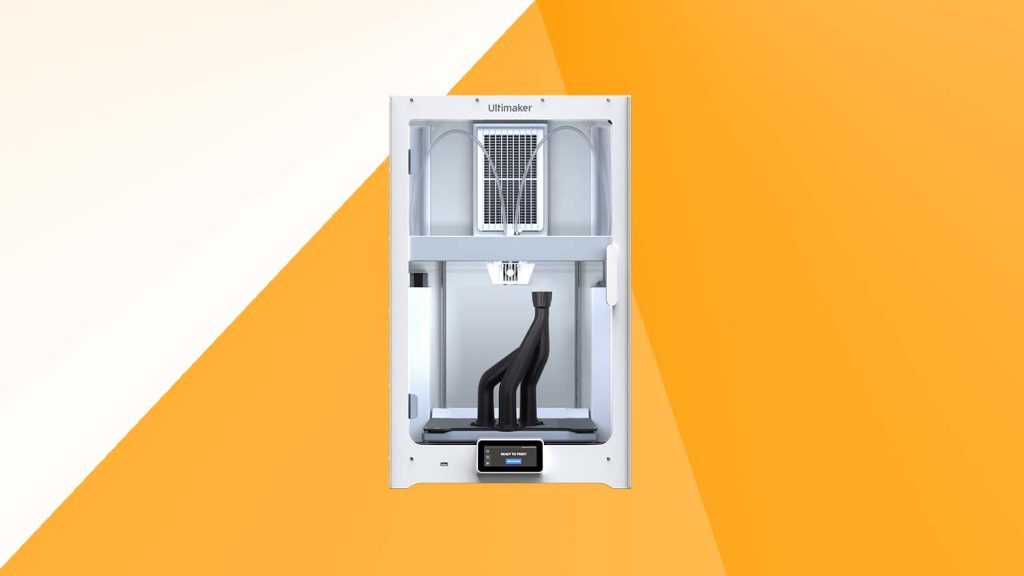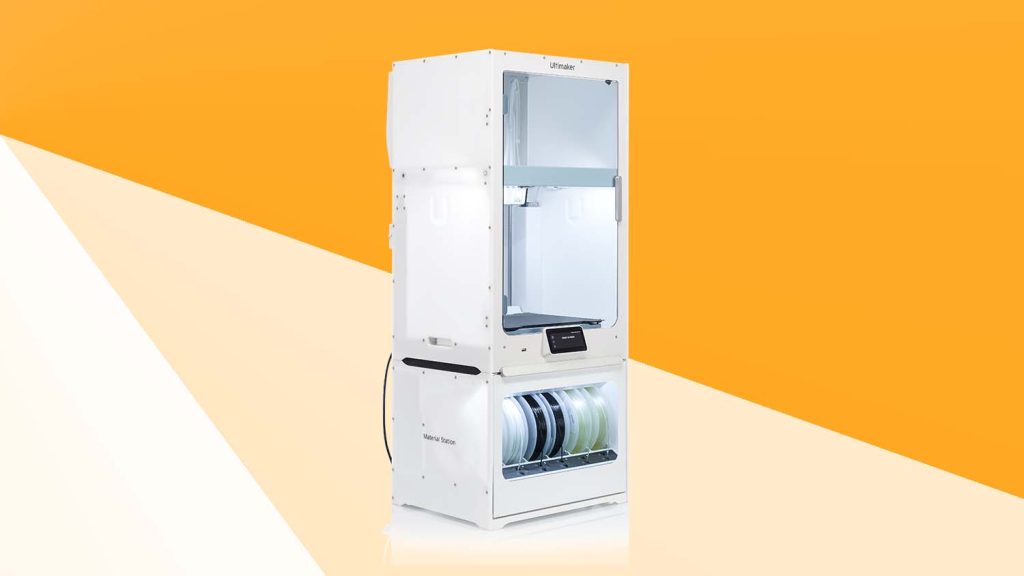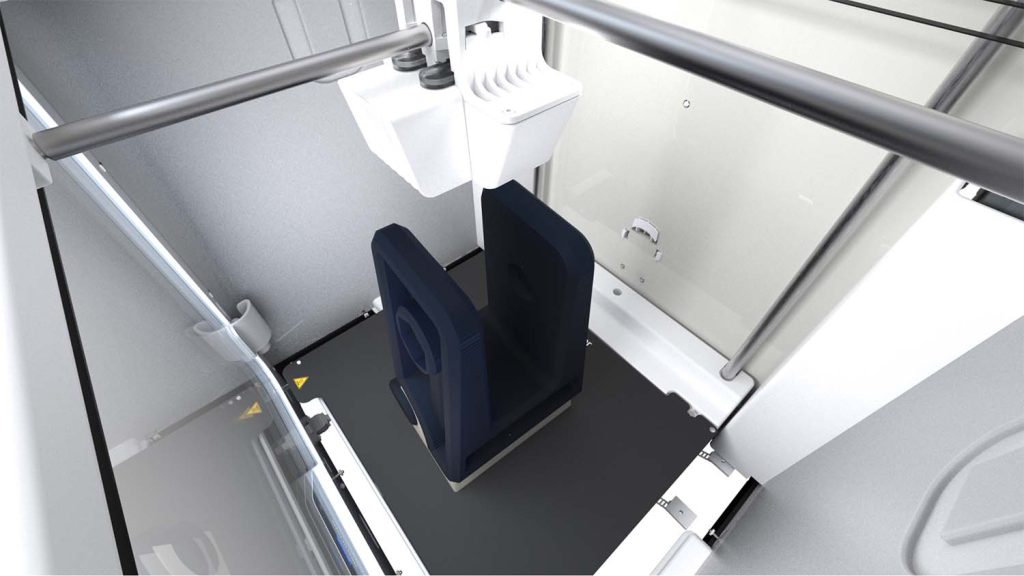The S7, the first professional 3D printer from the joint Ultimaker and MakerBot brand, builds on features and reliability of the S5, while hinting at things to come
The launch of the UltiMaker S7 3D printer gives us the first glimpse of the cooperation being forged since desktop additive manufacturing stalwarts MakerBot and Ultimaker merged last year.
An updated version of the popular Ultimaker S5, the existing model that is reportedly in use by over 25,000 customers, the new model in the FDM ‘S’ range allows users to capitalise on the large 330 x 240 x 300mm build volume.
The S7 introduces a range of new features designed for ease of use and print reliability. A new flexible build plate makes removing prints a breeze and the integrated air filter is claimed to remove up to 95 per cent of UFPs and improves temperature regulation. The S7 also features improved automated bed leveling for reliable first-layer adhesion.
Speaking to UltiMaker CTO Miguel Calvo, he explains that while the base electronics are familiar to that of an S5, the new model has been fully loaded with new sensors and tweaks to make sure every print is right first time.
“It’s fundamentally the same electronics,” says Calvo, “But in the S7, we have more sensors. For example, we have a build plate presence sensor; we have a new sensor in the fan bracket, so if the fan brackets open, you can’t trigger a print, because we see [that] in the data and in the support calls. It’s user error, right? Somebody forgot to close the fan bracket, but you could trigger a print so we put a sensor in there, again, upping the reliability.
“We’re making it ‘failsafe’ as much as we can by adding the sensors.”
Further wizards and walkthroughs with image guides have been added too, so if errors are encountered, the user can quickly work to solve the issue with the 3D Printer’s guidance.
One of the key draws of the 3D printer will be its compatibility with the UltiMaker ecosystem of over 200 materials, including those from third parties including Polymaker, whose marketing manager claims of all the ecosystems available, “the UltiMaker ecosystem is the most comprehensive”.
All UltiMaker products will operate using Cura software, which we’re told has seen further input from the US-based MakerBot side of the deal, and the printer firmware has also received a timely update.
“Cura’s the lead software, it’s the right software to use for an Ultimaker, you will only get the best print quality, reliability and all that kind of good stuff using Cura, and Cura remains open source and we’re dedicated to continuing that development,” explains Calvo.
An S7 Pro Bundle allows users to pair the S7 with the UltiMaker Material Station to print with up to six spools with automatic material switching and humidity control.
“The UltiMaker S7 is a fantastic addition to our S-Series of printers,” said UltiMaker CEO Nadav Goshen. “As more customers are using 3D printing to grow and innovate their business, our goal is to provide them with a complete solution to be successful.
“With the new S7, customers can be setup and running in minutes: managing printers, users, and designs with our Digital Factory software, improving their 3D printing knowledge with e-learning courses on the UltiMaker Academy, and choosing from hundreds of materials and plugins using the UltiMaker Cura Marketplace.”
Where the S7 will ultimately sit in the combined UltiMaker product line is still a point of intrigue. Calvo explains that the S7 is “top of the line in the S-line”, but where this positions the Method line-up of 3D printers from the MakerBot heritage is less certain, and how close the UltiMaker line will be allowed to encroach on Stratasys’ F123 range is yet to be acknowledged.
For now, the S7 looks like a 3D printer looking to cement its status as the desktop FDM unit of choice, with its slither of automation, software control and now improved US support from the MakerBot sales groups, it should offer a better proposition for many design studios and workshops than the majority of its rivals.
However, much of that will depend on what the new branding adds to the cost. We weren’t offered any numbers at time of press, but with an S5 Pro bundle weighing-in north of £10k, we’re conscious that at a time of cost-cutting and frugality in the industry, the S7 might need to use some of those new sensors to feel its way out onto a market that UltiMaker tells us is so already saturated with S5 models.
MakerBot and Ultimaker in merger ‘to accelerate’ desktop 3D Printing








